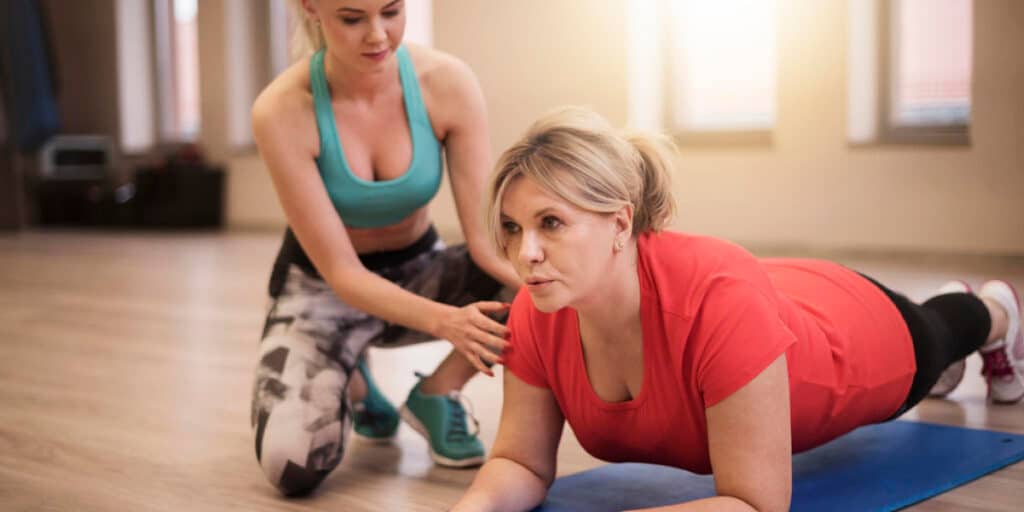When taking up a new activity, it can be easy to get swept up and want to do it all the time. When it comes to exercise this isn’t always a good idea, and over working can often end up resulting in injury. So is it bad to do Pilates every day?
It is possible to do Pilates every day providing you vary the workout to avoid overtraining certain muscles. The benefits of a regular practice of Pilates, such as improved balance, coordination, core strength, and mental health, means regular practice will improve your quality of life.
The goal of this workout is to improve overall fitness and help prevent injury. While doing it every day is fine, if you feel like you’re getting too sore, then take a break.
As a beginner, you should ease into a new routine by starting with less intense, and less frequent, workouts. Try every other day to start with while you learn the correct technique and become comfortable listening to feedback from your body.
The history of Pilates
The brainchild of Joseph Pilates, a German physical trainer who pioneered the method in the early 20th century, Pilates stands out from other exercise methods by using the entire body during the workout routine.
It doesn’t require any special Pilates equipment to get started (although a mat is recommended) and if done regularly as part of a health lifestyle will lead to lean muscles, a toned figure and an improved quality of life.
During it’s early years it became popular with New York dance community members and eventually became the global phenomenon that we know today.
What happens to your body if you do Pilates every day?
With so many variations of workouts available, it is easily possible to do Pilates every day of the week, but why would you want to?
- You will become more flexible, toned and stronger.
- Doing it every day will result in a strong core.
- It helps improve your posture.
- It helps improve your mental state.
To see even more benefits, check out The many benefits of Pilates
The more often your practised, the quicker you’ll notice these benefits. However, it’s important to keep in mind you need to maintain a healthy lifestyle, it’s not just about working out.
How often should you do Pilates for the best results?
The frequency of Pilates sessions depends on how much time you want to invest in your fitness routine. If you want to see results quickly, then doing it at least twice a week is ideal. If you want to achieve long-term results, then three+ times a week is recommended.
Note it can take time to see results from Pilates, but it is a great way to tone up and stretch your body. See How long does it take to see results from Pilates?
If you’re new to this type of workout it’s essential you gain professional tuition before embarking on a daily exercise routine. It’s very easy for beginners to get poses wrong, or to attempt an advanced class they’re not ready for, and this can lead to injury.

Pilates may not look intense, but it’s a whole-body workout
If you’ve done weight training or high-intensity exercise you might initially think Pilates isn’t an intense form of exercise. You’d be wrong! ?
It is an intense full-body workout that incorporates all major muscle groups. This means your abs, back, shoulders, arms, legs, glutes, hamstrings, calves and feet are all worked hard.
It’s true that most routines can’t be considered a cardiovascular workout (although some can, see: YES! Pilates CAN be a cardio workout), however you’ll be surprised just how difficult the precise movements required in a Pilates class can be.
It challenges your upper and lower body, and you can increase the intensity by combining it with other workouts or equipment.
Incorporate other exercises to build muscle
I’ve mention several times that Pilates is a great way to become stronger and gain tones muscles, however if you plan on doing it daily specifically to build muscle, you might want to incorporate other exercises
To build muscle effectively, you need to utilize the principles of progressive overload. Pilates isn’t intense enough to create progressive overload, so if you’re looking to build muscle, incorporating activities like lifting weights is advisable.
For more information on this see Is Pilates Strength Training? – Will it benefit your development?
Rest Your Body
Pilates is not just about strengthening – it is about connecting the mind to the body so you’re better able to listen to physical feedback and it helps to activate muscles in the body which you might not normally use or are underused.
If you’re already doing other more intense exercise Pilates can be an excellent option on active rest days, see Can you do Pilates on your rest days? Here’s the truth.
If you’re only doing Pilates consider getting into a good rhythm that alternates how challenging the workouts are. For example, do a physically challenging workout one day and follow up with a day or two that is easier on the muscles.
This was something Joseph Pilates believed in, that the ideal workout is varied and includes different intensity levels.
Repeating the same workout every day can result in an unbalanced routine that becomes boring and could lead to you abandoning it completely. That’s why it’s a good idea to either attend a Pilates class in person, or sign up to an online class.
How to Do Pilates Every Day
If you’re ready to incorporate Pilates into your everyday life here are some tips:
- For beginners:
- Find a qualified Pilates teacher in your area, or a gym/studio that offers a variety of Pilates classes.
- Start with a beginner’s class.
- When you feel comfortable with the basics, sign up for a variety of classes to keep things interesting (different types of Pilates and different instructors).
- Built up to every day: Start with twice a week, add in extra days as you progress.
- On days without a class, do a workout via online instruction (e.g. YouTube workouts).
- Plan your week ahead, commit to a set time you will work out, put it in your diary.
- It’s OK to do different length workouts, do shorter workouts (e.g.20 minutes) on busy days when you’ve little time, but try for 45 to 60 minutes as the norm.
- Track your progress to record results (see: TRACK PROGRESS)
How often you should do Pilates depends on your fitness level and goals, but a minimum of 20 minutes a day is usually enough for most people.
It can take up to six months of consistent Pilates practice for results, but the benefits are worth it!
Vary Your Workout
Joseph Pilates firmly believed that the workout should be varied to maximize its effect.
Repeating the same workout every day can become boring, so use a variety of workouts to keep your muscles fresh.
It is important to focus on the purpose of each exercise and maintain concentration while performing them.
To get you started try this 8 day challenge, 8 videos, 1 per day, each different from the last:
Find Your Rhythm
I strongly believe beginners should seek professional tuition when starting out, but that doesn’t mean you should attend a class every day as Pilates can be done at home with a mat and videos.
Find a consistent schedule that works for your life. Perhaps you follow a video in the morning before work most days, but one evening you attend a class. Perhaps your shift work allows you to attend daytime classes.
Build it in as part of your regular routine and your core muscles will thank you!
Remember that Pilates is a low impact workout that is challenging, but doesn’t usually result in you dripping with sweat, so it’s easier to fit in than other workouts that then require a shower immediately after.
You can expect to see improvements in your mood and body after starting Pilates for the first month.
Progress continues over time, with greater results following 30 days of consistent practice.
Conclusion: Is it Bad To Do Pilates Every Day?
Can you do Pilates every day? Sure! Do you have to in order to see results? No, you can still gain the benefits when you make it part of your routine, even if that’s not every single day.
Doing Pilates several times per week will give you a moderate workout via mat exercises alone. If you’re not doing anything at the moment you’ll find the introduction of regular exercises via Pilates workouts will lead to stronger muscles, greater flexibility and a higher quality of life.
You can mix things up, add pieces of equipment such as the magic circle, or even skip a mat class and do dedicated strength training workouts, returning to Pilates on rest days to help increase your range of movements.
It’s such a flexible form of exercise (pun intended!) I truly believe it will fit in with any other forms of exercise you’re already doing.
So what are you waiting for? Grab your mat and plan out when you’re going to be doing your Pilates exercises.




